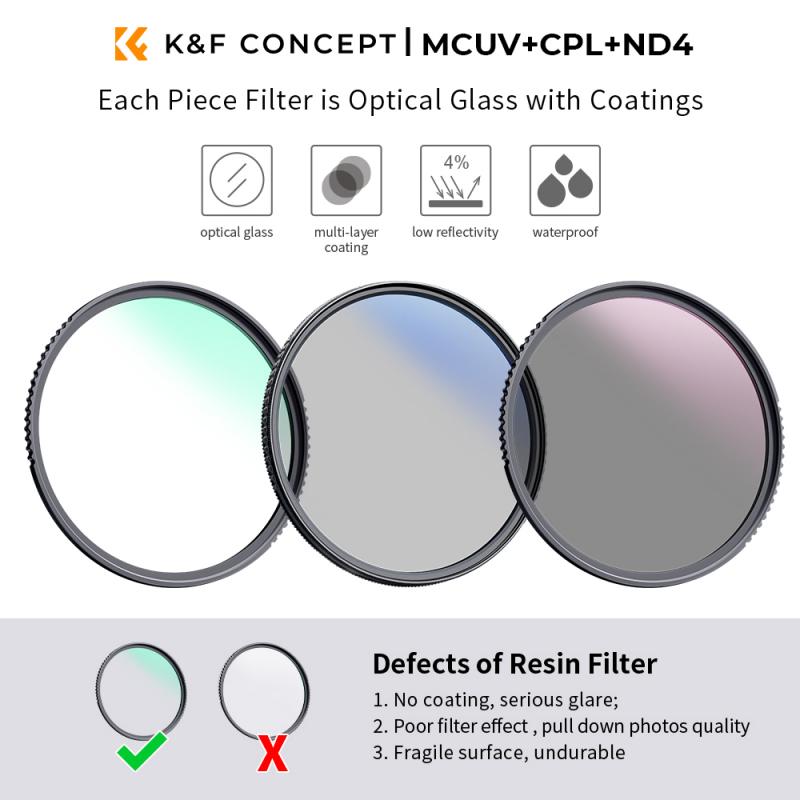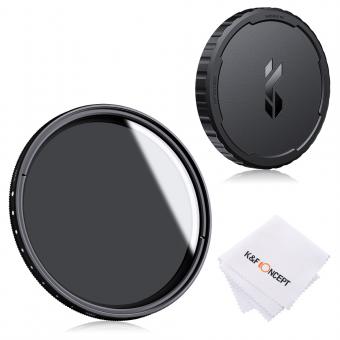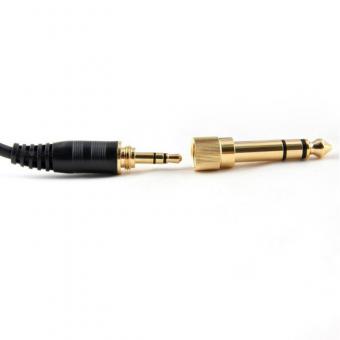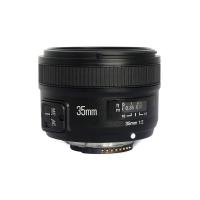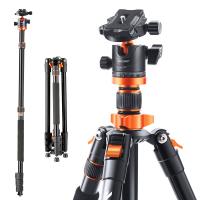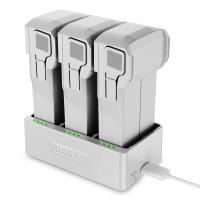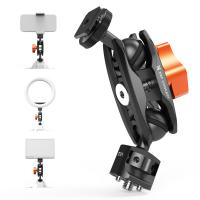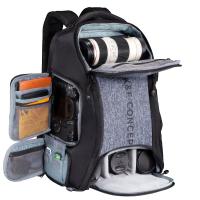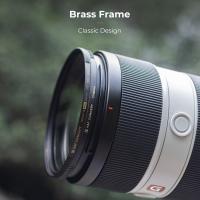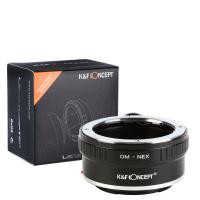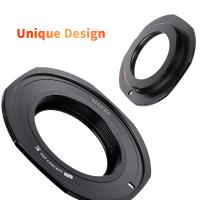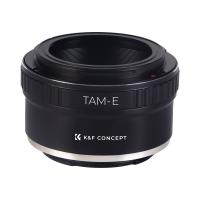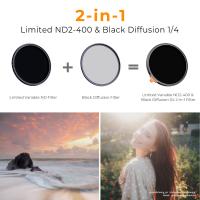What Is Nd Filter Used For ?
An ND filter, or neutral density filter, is a type of camera filter that reduces the amount of light entering the lens without affecting the color or hue of the image. ND filters are commonly used in photography and videography to achieve certain creative effects, such as blurring motion or creating shallow depth of field in bright lighting conditions. They can also be used to reduce the dynamic range of a scene, allowing for better exposure balance between bright and dark areas. ND filters come in different strengths, measured in stops, which determine the amount of light reduction. Stronger ND filters are used in brighter lighting conditions, while weaker ones are used in lower light situations.
1、 Definition of ND filter
What is ND filter used for?
An ND (Neutral Density) filter is a type of camera filter that reduces the amount of light entering the camera lens without affecting the color or hue of the image. ND filters are commonly used in photography and videography to achieve certain creative effects or to overcome technical limitations.
One of the most common uses of ND filters is to achieve a shallow depth of field in bright lighting conditions. By reducing the amount of light entering the lens, the camera can use a wider aperture to achieve a shallower depth of field, which can create a more dramatic and visually appealing image.
ND filters are also used to create long exposure shots, which can create a sense of motion or blur in a still image. By using a long exposure and an ND filter, photographers can capture the movement of water, clouds, or other elements in a scene.
In videography, ND filters are used to maintain a consistent exposure when shooting in changing lighting conditions. By using an ND filter, videographers can avoid overexposure or underexposure when moving from bright to dark areas in a scene.
Overall, ND filters are a versatile tool for photographers and videographers, allowing them to achieve creative effects and overcome technical limitations in a variety of shooting situations.
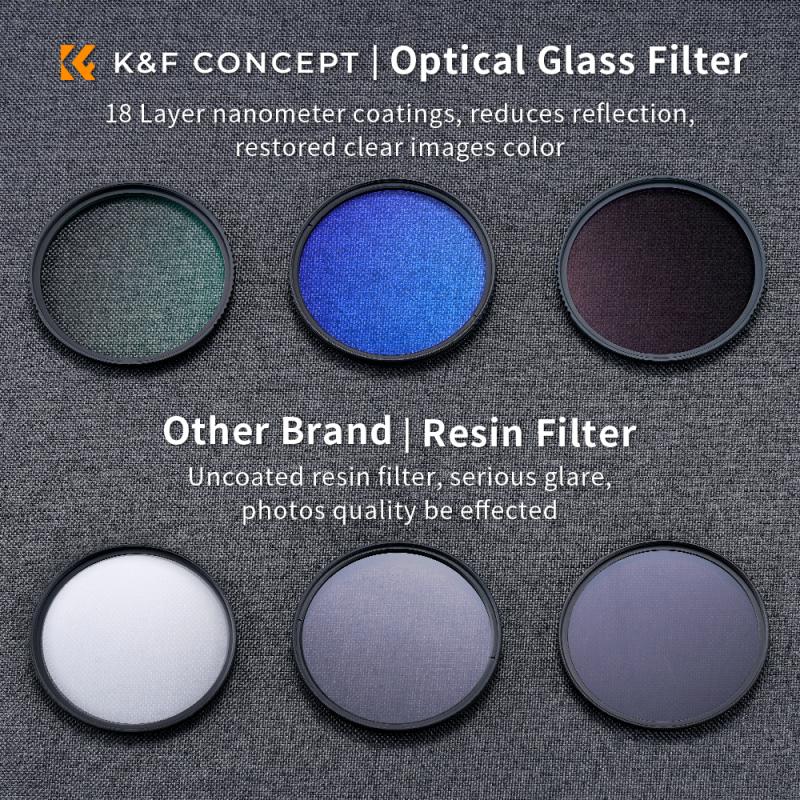
2、 Types of ND filters
What is ND filter used for?
An ND filter, or neutral density filter, is a type of camera filter that reduces the amount of light entering the lens without affecting the color or hue of the image. ND filters are commonly used in photography and videography to achieve certain creative effects or to overcome technical challenges.
One of the most common uses of ND filters is to achieve a shallow depth of field in bright lighting conditions. By reducing the amount of light entering the lens, the photographer can use a wider aperture and create a blurred background effect, even in bright sunlight.
ND filters are also useful for long exposure photography, such as capturing the motion of water or clouds. By using a strong ND filter, the photographer can slow down the shutter speed and create a smooth, flowing effect in the image.
Types of ND filters:
There are several types of ND filters available, each with a different level of light reduction. The most common types include:
1. Fixed ND filters: These filters have a set level of light reduction, such as 2 stops or 4 stops. They are ideal for situations where the lighting conditions are consistent.
2. Variable ND filters: These filters allow the photographer to adjust the level of light reduction by rotating the filter. They are ideal for situations where the lighting conditions are changing, such as during a sunset or sunrise.
3. Graduated ND filters: These filters have a gradual transition from clear to dark, allowing the photographer to balance the exposure between the sky and the foreground in landscape photography.
4. Reverse ND filters: These filters have a stronger light reduction in the center, gradually becoming lighter towards the edges. They are ideal for capturing sunrises or sunsets with a bright sun in the frame.
In recent years, there has been a growing trend towards using ND filters in smartphone photography. Many smartphone manufacturers now offer built-in ND filters or clip-on filters that can be attached to the camera lens. This has opened up new creative possibilities for mobile photographers and videographers.
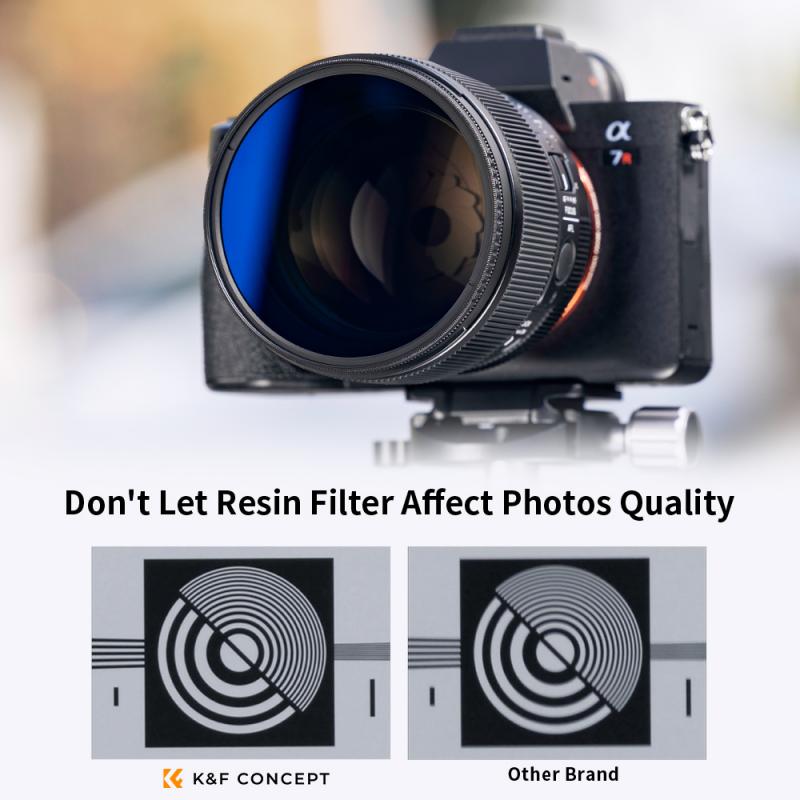
3、 How to choose the right ND filter
What is ND filter used for?
ND filter, or neutral density filter, is a type of camera filter that reduces the amount of light entering the camera lens without affecting the color or hue of the image. It is commonly used in photography and videography to achieve certain creative effects or to overcome technical challenges.
One of the most common uses of ND filters is to achieve a shallow depth of field in bright lighting conditions. By reducing the amount of light entering the lens, the camera can use a wider aperture to create a blurred background effect, even in bright sunlight.
ND filters are also useful for long exposure photography, such as capturing the motion of water or clouds. By using a longer shutter speed, the camera can capture the movement of the subject over time, creating a sense of motion and fluidity in the image.
How to choose the right ND filter?
Choosing the right ND filter depends on the lighting conditions and the desired effect. ND filters come in different strengths, measured in stops, which indicate how much light they block. A 1-stop ND filter reduces the light by half, while a 10-stop ND filter reduces the light by a factor of 1000.
To choose the right ND filter, consider the lighting conditions and the desired effect. For example, a 3-stop ND filter is suitable for shooting in bright sunlight, while a 10-stop ND filter is ideal for long exposure photography.
It is also important to consider the quality of the ND filter. Cheap filters can introduce color casts or reduce image sharpness, while high-quality filters maintain the color accuracy and sharpness of the image.
In recent years, some photographers have also started using variable ND filters, which allow for adjustable light reduction by rotating the filter. However, these filters can introduce some image quality issues, such as vignetting or color shifts, so it is important to choose a high-quality variable ND filter if using this type of filter.

4、 ND filter vs polarizer filter
What is ND filter used for?
An ND (Neutral Density) filter is a type of camera filter that reduces the amount of light entering the camera lens without affecting the color or hue of the image. ND filters are commonly used in photography and videography to achieve a variety of creative effects, such as blurring motion, creating shallow depth of field, and shooting in bright light conditions.
ND filters come in different strengths, measured in stops, which indicate how much light they block. For example, a 3-stop ND filter reduces the amount of light entering the lens by three stops, which means it allows only 1/8th of the original light to pass through.
ND Filter vs Polarizer Filter
ND filters and polarizer filters are both camera filters that serve different purposes. While ND filters reduce the amount of light entering the lens, polarizer filters reduce glare and reflections from non-metallic surfaces such as water, glass, and foliage.
Polarizer filters are commonly used in landscape photography to enhance the colors and contrast of the scene, while ND filters are used to control the exposure and achieve creative effects.
In some cases, photographers may use both ND and polarizer filters together to achieve a specific effect, such as capturing a long exposure of a waterfall while reducing glare and reflections from the water.
The latest point of view is that both ND and polarizer filters are essential tools for photographers and videographers, and their use depends on the specific situation and desired outcome. With the increasing popularity of drone photography and videography, ND filters have become particularly important to control the exposure in bright outdoor conditions.
